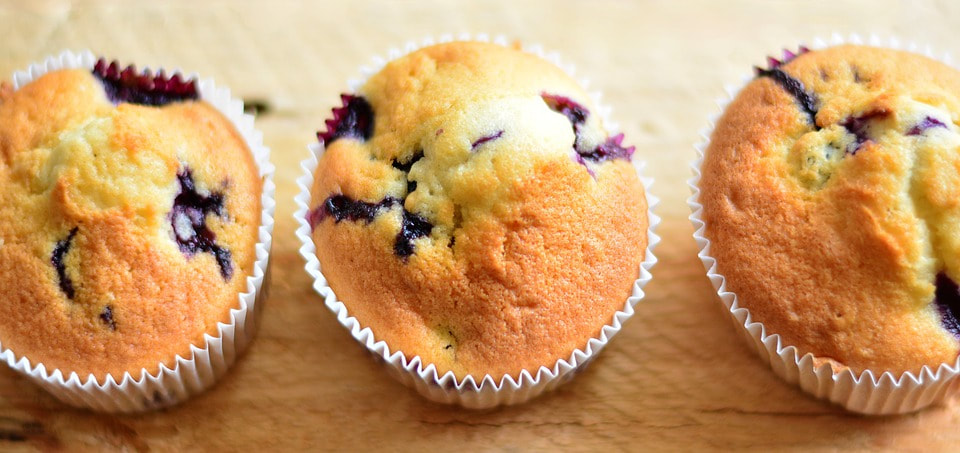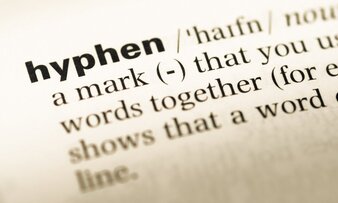 What is the definition of an ellipsis and how is it properly used? Inquiring minds want to know. Look to the image for a hint . . . In grammar, an ellipsis is a single punctuation mark comprised of 3 consecutive dots. Depending on your style guide, the dots can be crunched together like this ... or spaced like this . . . How is the ellipsis properly used? #1: An ellipsis can stand in for omitted words. This is super handy when grabbing lengthy quotes for your high school essays and professional documents. Here's an example from The Family Romanov by Candace Fleming, page 46: "One item the empress did not stint on was the girls' clothing. She liked to outfit the grand duchesses by pairs in matching and expensive dresses ... long hair was tied back with blue satin bows." (The ellipsis stands in for a family friend's description of the clothing.) #2) In written dialogue, the ellipsis can indicate speech that tapers off, is interrupted by another speaker, or signifies a pause. "It's not fair that you always ..." (This could signify interruption or tapering off) "I'm not sure ... let me think about it for awhile." (This is a pause in dialogue.) Why do we sometimes see four dots instead of 3? That happens when the ellipsis follows a period. Here's another quote from The Family Romanov, page 184: "The soldiers did little to stop this. Not long ago, just a glimpse of the tsar would have sent them to their knees. . . . One could hardly blame them for their gaping and mocking." Are there spaces on either side of an ellipsis? Yes, with the exception of a question mark, which should follow an ellipsis without a space. Can any other punctuation stand in for the ellipsis? The em dash can be substituted for the ellipsis in dialogue. That's the longest dash, roughly the width of the letter M. Do's and Don'ts: Choose your style and stick with it. In case you're wondering, the ... crunched together way is from the AP Stylebook. The . . . spaced apart way is from the Chicago Manual of Style. Don't switch back and forth between M dashes and ellipses, either. One final point: avoid starting a sentence with an ellipsis. I sincerely hope that answered your ellipsis questions! Please, keep those questions coming!! I'll always do my best to answer them in easy-to-understand language. Stay healthy and safe, Laura Fineberg Cooper
3 Comments
 In honor of A Spoonful of Grammar's 1st anniversary, I'm pleased to share the recipe for the BEST blueberry and raspberry muffins I've ever tasted. This recipe hails from the Captain Lord Mansion, a luxurious B&B in Kennebunkport Maine. It makes 12 muffins that will be gobbled in a flash. Make sure you check out my time-saving tip!! Set oven to 375 degrees Line or butter your regular-sized muffin tin Ingredients: 1/2 cup soften margarine or vegetable oil 1 cup sugar 2 large eggs 1 teaspoon vanilla extract 1/2 cup milk (I use 2%) 2 cups flour 2 teaspoons baking powder 1/2 teaspoon salt 1/2 teaspoon cinnamon 2 cups fresh blueberries or raspberries (or a combination of both) Directions: 1) With an electric mixer, cream margarine and sugar together 2) Beat in egg, vanilla, and milk 3) In a separate bowl, sift together flour, baking powder, salt, and cinnamon 4) Stir the egg mixture into the flour until all ingredients are moist 5) Fold blueberries or raspberries in by hand. Be gentle with this last step, especially if using raspberries. 6) Butter muffin tin or use paper liners. 7) Fill muffin tin, making sure each spot is filled to the top. 8) Sprinkle the top of each muffin with a little sugar before baking. 9) Bake for 28 minutes or until tops are golden brown 10) Serve warm and enjoy! Time-saving tip: For my latest batch, I only had vegetable oil on hand and the muffins came out great! The beauty of using oil is that you can easily and quickly mix all the ingredients together by hand. I still recommend folding in the berries last, especially with delicate raspberries. What makes this recipe so special? Cinnamon is the magic ingredient here - it makes the muffins smell and taste divine!! And the sprinkling of sugar before baking provides a satisfying crunch. Can you substitute frozen berries? If you rinse and dry them so they aren't syrupy, they will probably work. If that's all you have on hand, give it a try! Though I haven't tried it, I imagine you could also substitute chocolate chips! These muffins are special enough for celebratory brunches and easy enough for every day. Especially when home with our families during this unsettling time, this recipe is a wonderful way to soothe bellies and souls. Have fun baking and please stay warm, healthy, and safe! Sincerely, Laura Fineberg Cooper A Spoonful of Grammar  When gripped by unprecedented fears, we can all benefit from a spoonful filled with hope and positivity. This post is especially short and sweet, and I hope it brings you a measure of comfort. HOPE (def.) = a strong desire for a favorable outcome Synonyms for HIGH HOPES: ASPIRATIONS, DESIRES, WISHES, AIMS, GOALS, DREAMS Synonyms for a life FILLED WITH HOPE: HOPEFULNESS, OPTIMISM, EXPECTATION, FAITH, BELIEF, PROMISE What are your aspirations, desires, wishes, aims, goals, and dreams? Use some of this time at home to identify and take positive steps toward achieving them, no matter how small. I advise setting at least one goal you can accomplish from home. Mine is to reach out to far away family and friends, one per day. Another goal is to take a family walk at least once per day (I know our boxer will appreciate that). What are your goals? Please accept my strongest hopes for your continued health and safety during this immensely trying time. Sincerely, Laura Fineberg Cooper  Do two dogs share one ball or each possess their own? Do two sisters share a single bike or each possess their own? Do two friends share common beliefs or each possess their own? These are all questions of COMPOUND POSSESSION. As writers, how do we reflect each situation properly? The answer, my friends, lies with APOSTROPHES. Let's start by examining BELIEFS Ask yourself this question: Is the same belief shared by two people? YES or NO. If YES, these two people can share a SINGLE APOSTROPHE! Here's an example: Marigold and Petunia's spiritual beliefs align. If NO, TWO APOSTROPHES are required. Here's an example: Marigold's and Petunia's spiritual beliefs differ dramatically. Now let's examine OBJECTS Ask yourself this question: Is the same object shared by two people? YES or NO. If YES, these two people can share a SINGLE APOSTROPHE! Here's an example: Harrison and Dmitri's Science Fair project tested the ability of citrus fruit to generate electricity. If NO, TWO APOSTROPHES are required. Here's an example: Harrison's and Dmitri's Science Fair projects won first and second place, respectively. With grammar, there are always exceptions! In this case, when one of the owners is listed as a POSSESSIVE PRONOUN (my, your, our, her, his, its, their) instead of a name, ALWAYS USE AN APOSTROPHE plus the singular or plural form of the noun and the related verb. To begin, ask yourself the same question as before: Is the same object shared by two people? YES or NO. The examples should make everything clear. If YES: Jeremy's and my hamster is named Hammy. (singular form) If NO: Jeremy's and your hamsters are best buddies, just like you and Jeremy. (plural form) Thank you for reading my weekly grammar blog, A Spoonful of Grammar. In the spirit of COMPOUND POSSESSION, please feel free to share any of my posts! Sincerely, Laura Fineberg Cooper  Someone asked me a hyphen question the other day, and I thought, "What a great topic for a spoonful!" Thus 10 HANDY HYPHEN RULES was born. I sincerely hope you find it handy! 1) When two last names are permanently joined together, hyphens are usually used to connect them. Mary Johnson-Young Julie Watson-Smith (You may be wondering why Fineberg Cooper isn't hyphenated! That's because I treat Fineberg as my middle name for professional purposes.) 2) Use a hyphen after prefixes ALL, SELF, and ALL; hyphens are also generally used with EX and prefixes ending in the same sound as the word that follows. ex-president all-knowing self-service anti-inflammatory re-establish 3) Use hyphens when writing out numbers from 21 to 99. Also use hyphens when writing out fractions. twenty-one thirty-six ninety-nine two-tenths three-fifteenths 4) Use a hyphen to connect a prefix to a proper noun - essentially, whenever it connects to word starting with a capital letter. mid-April showers pro-American rally anti-Nazi sentiment 5) When two or more words join together (acting as compound adjectives) BEFORE a noun, connect them with a hyphen. well-known scientist fresh-baked pie cranberry-orange muffins late-breaking news When are hyphens unnecessary? When the first adjective ends in ly or when compound adjectives are placed AFTER a noun. freshly baked pie The scientist was well known. 6) Use hyphens to separate words in compound nouns. state-of-the-art daughter-in-law free-for-all up-to-date 7) Use hyphens when numbers and words are combined. The trick here is that you should only use hyphens when these act as adjectives BEFORE a noun or as the noun itself. If placed AFTER a noun, no hyphens are required. Do you notice a pattern here? The 1-mile fun run is popular with young children in town. My 5-year-old daughter loves to participate. NO HYPHEN: The race is capped at 50 kids, all under 10 years old. 8) You're likely to see words with the prefix "co" with and without hyphens. Consider co-worker vs. coworker, one of the most frequently seen examples. For me, the hyphen-less version looks like "cow" so I prefer the hyphen, but both are acceptable. With most business and technical words, hyphens are showing up less and less. Here are some "co" words that should retain their hyphens: co-conspirator co-anchor co-editor co-chairman 9) Great, when used as a relationship prefix, calls for hyphens. great-grandmother great-great-aunt 10) Hyphens feature in creative writing too. If you want to have a character stutter or spell their name out loud, hyphens are your friends. "D-d-don't leave m-m-me here!" My name Wanda: W-a-n-d-a. Hopefully, this list of 10 HANDY HYPHEN RULES answered most of your questions. Please feel free to share! Sincerely, Laura Fineberg Cooper |
Welcome to
|
 RSS Feed
RSS Feed
